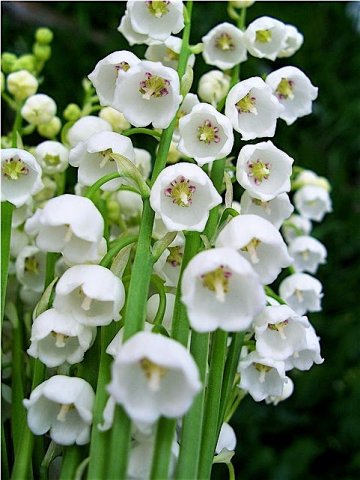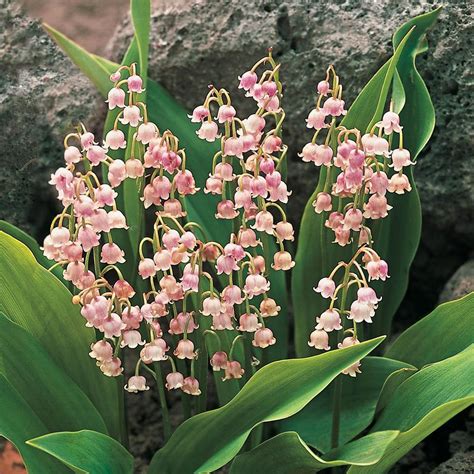The Lily of the Valley is a fragrant flower that is native to Eurasia and North America. It can be grown in shaded areas in temperate climates. In most parts of the world, this plant is a symbol of Easter times and weddings. It grows 15 to 30 cm tall in the springtime in the northern hemisphere. It cannot survive in hot temperatures. Its blooms are bell-shaped and mostly white. There is one variety that has a rosy pink hue for its flowers. This plant is not a real lily as it belongs to the asparagus family. Don't be fooled by its charming looks. If ingested, the flower is poisonous to both humans and animals and can cause vomiting and diarrhea. But during WW1, it was used to counter the effects of mustard gas and to treat skin burns and even epilepsy. Since it flowers in spring, the flower represents the return of happiness, and many brides choose to wear it on their wedding day.
The Lily of the Valley is the national flower of Finland and former Yugoslavia. It is also very important in France where it depicts the return of spring and is sold and offered on May 1. It is said that in 1560, King Charles IX, who was the King of France, received the flower as a gift. He loved its scent so much that he started offering it to the ladies of his court when it bloomed. In old Germanic folklore stories, the Lily of the Valley was the flower of Ostara, the Norse goddess of spring and dawn. In Greek mythology, Apollo grew this flower to the passage of the woods to protect the feet of his nine muses. In Christian tales, the Lily of the Valley is named Our Lady's Tears, which came from Mary's weeping when Jesus was crucified. Another legend has the flower coming from the tears shed by Eve when she and Adam were expelled from the Garden of Eden.
Whether you consider the Lily of the Valley a simple beautiful blossom or a certain symbol of purity, delicacy, and kindness, may you enjoy it and share it!
Happy Labor Day 🌱🌱


